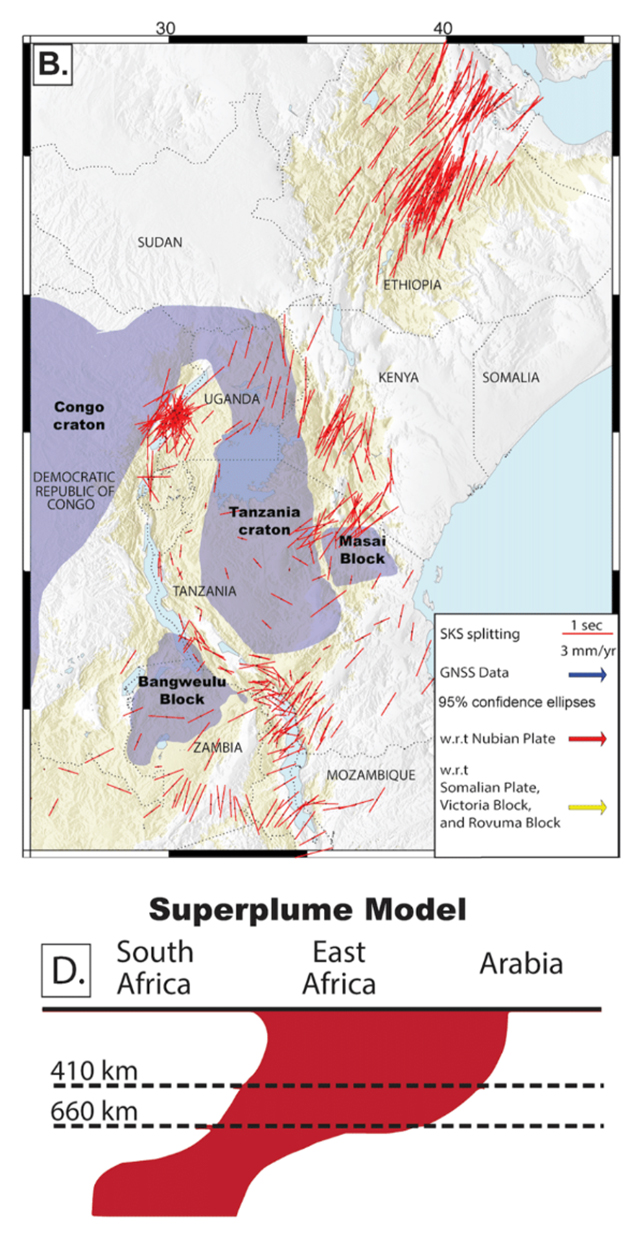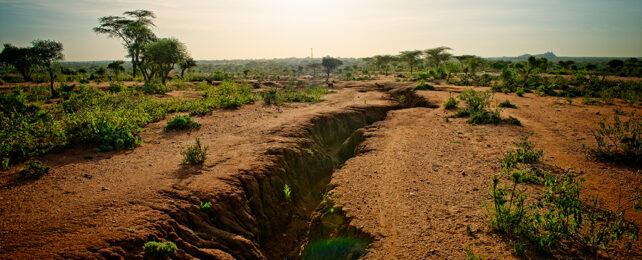Earth's largest continental rift, the East African Rift (EAR) system, has been something of a mystery for geologists – but a new study combining computer models with GPS satellite data appears to have found an explanation.
Rifts are caused by tectonic plates moving away from each other, leading to the lithosphere (Earth's crust and upper mantle) stretching and being pulled apart. This leads to deformations on Earth's surface, usually perpendicular to the plate movement.
Not so with the EAR.
Here, deformations run both perpendicular and parallel to the plate movement. It's almost as if the rift is being pulled from multiple directions at once, based on the observations that geologists are making.
The 3D models developed by the authors of the new study point to this extra parallel deformation being a result of the African Superplume, a massive upwelling of hot mantle from deep within our planet, carrying heat up to the surface.
This upwelling of partially molten rock stretches from southwest to northeast Africa becoming shallower along the way, and is shaping the flow of the mantle beneath.
It seems the mantle flow may be, "causing the anomalous northward deformation parallel to the rift," says geophysicist Tahiry Rajaonarison from New Mexico Tech.
The same African Superplume is likely responsible for some of the seismic anisotropy – alignment of rocks in a certain direction in response to geological forces in the mantle – occurring beneath the EAR, as previously noticed by researchers.
An earlier study from the same team looked at the mix of forces that might be at work on the rift. These include the shallower lithospheric buoyancy forces (upward forces driven by the lithosphere's density being lighter than the mantle) and the deeper mantle traction forces (caused by the movement of material in the mantle).

While it appears that both are at work along the EAR, the latest research points to deeper mantle forces, driven by the African Superplume, as being responsible for the parallel deformations, with lithospheric buoyancy behind the typical perpendicular cracks.
"We confirmed previous ideas that lithospheric buoyancy forces are driving the rift, but we're bringing new insight that anomalous deformation can happen in East Africa," says Rajaonarison.
The EAR stretches for some 6,400 kilometers (nearly 4,000 miles), and the thinking is that over millions of years it's going to split Africa in two. As the lithosphere stretches thinner, we're going to see more earthquakes and breaking rock structures across the region.
However, predicting large-scale geological movements like this is an incredibly challenging task. The research team compares the different deformations that can happen simultaneously as being akin to working with Silly Putty.
"If you hit Silly Putty with a hammer, it can actually crack and break," says geophysicist D. Sarah Stamps from Virginia Tech.
"But if you slowly pull it apart, the Silly Putty stretches. So on different time scales, Earth's lithosphere behaves in different ways."
The research has been published in the Journal of Geophysical Research: Solid Earth.
